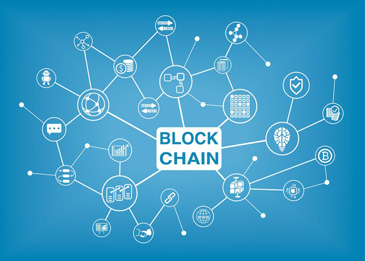Electronic medical records have been introduced with the main objective of care coordination and ensuring the best outcome for patients. Alongside, EHRs are also expected to make processes such as medical record retrieval and medical records review easier. However, there is one major concern with the electronic health record – how to ensure that multiple healthcare providers can view, edit and share patient information and at the same time maintain a reliable, up-to-date record of diagnoses, medications, and the various medical services provided. Another problem with EHR is that doctors are now spending more time typing than talking to their patients. This has led to increase in physician burnouts – as per a Mayo clinic study this has increased from 45 to 54 percent between 2011 and 2014. Physicians want to streamline the EHR process so that their data entry work is minimized and patient care is optimized. Healthcare technologists working to find a solution for the challenges posed by EHR think that Blockchain could be a good strategy.
Why Blockchain? Originally conceived of as a ledger for financial transactions, Blockchain uses public key cryptographic techniques to create a permanent, append-only, time-stamped chain of content. Its ability to use time stamping to authenticate changes to a dataset even if more than one user has permission to edit a document, is ideal for managing EHR data, says Dr. John Halamka, Beth Israel Deaconess Medical Center CIO and his colleagues from the MIT Media Lab. The weakness of EHRs is that they were not designed to manage multi-institutional, lifetime medical records. Patient data is scattered across various organizations and coordinating this information can be very challenging. Dr. Halamka and his research team developed a blockchain-based system called MedRec that is distinguished by the following features.
- Patients can authorize new members of their private, secure EHR community, approve changes, and supervise sharing of information between various providers.
- Providers can add new records of patients.
- In both cases above, the party receiving new information will receive an automated notification and can verify the proposed record before accepting or rejecting the data.
- This keeps the participants engaged in the medical records, and informed about all changes made from time to time.
- MedRec also offers a designated contract which aggregates references to all of a user’s patient-provider relationships. This provides a single point of reference to check for any updates made to the medical history.
Blockchain is a standard tool that keeps secure data in a distributed, encrypted ledger and control who has access to that ledger. There is one shared ledger that is spread across a network of synchronized, replicated databases that are visible to anyone who has authorized access. This system has unique security benefits because it is impossible to hack one block in the chain without simultaneously hacking every other block in the chain’s chronology. This is what makes blockchain highly appealing to physicians and hospitals that need secure access to a patient’s entire health history.
According to MedRec researchers, though EHRs that come from many different places may be very different from each other, the blockchain ledger itself is standardized.
- When a digital transaction takes place, bits of code group it into an encrypted block with other transactions happening at the same time.
- For EHRs, these transactions may be anything that happens to a patient on a doctor’s visit – a new prescription, X-ray, blood work and so on.
- These transactions are then validated by a physician, pharmacist or other healthcare personnel trusted with an access key.
- The software timestamps each validated block and adds it to a chain of older blocks in chronological order.
- The sequence shows each and every transaction made in the history of that ledger.
Considering an example suggested by Dr. Halamka, take the case of prescriptions. One medical record may show that a patient takes aspirin. Another says that she is taking Tylenol. There may be another record that says the patient is on Lipitor and Motrin. The problem with the present-day EHR is that it does not accurately tell the doctor what the patient is taking right now. Blockchain resolves this issue by treating each prescription as a “deposit” or transaction, and when a doctor discontinues a medication, they take a withdrawal. Blockchain shows the balance, or only the medications the patient is on currently.
Another advantage is that hospitals and pharmacies don’t have to transmit data back and forth to see it. They only have to point to the same common ledger.
It is expected that 35 percent of healthcare and life sciences organizations would deploy blockchain in the next year, as per a Deloitte report. Blockchain could work to unite diverse services of the healthcare system into one interoperable system – it could help track data from fitness devices and general wellness metrics, treatment at medical providers, prescriptions, and other details.
- Since blockchain transactions are traceable, this system could help reduce improper billing, address issues such as inappropriate prescribing and counterfeit drugs, and prevent unauthorized personnel from accessing sensitive patient data.
- Another advantage is that blockchain could help smooth over issues of patient consent for sharing data, which is one of the main challenges in developing a health information exchange system.
HIMSS (Healthcare Information and Management Systems Society) points out the technical challenges/concerns that stand in the way of implementing a blockchain solution.
- How analytics will be performed when data is on the blockchain
- The amount of energy required for proof of work (keys to scalability)
- The industry’s inertia, ethical use of data, versus privacy and industry standards
Blockchain for the healthcare sector is in its infancy, but experts in the field believe that it has the potential to standardize secure data exchange in a less arduous way than other approaches. Moreover, it will help healthcare providers increase efficiencies by securely recording and storing medical records and enabling smooth medical record retrieval. It ensures a cost-effective workflow that will allow hospitals to improve patient charting and scheduling.




